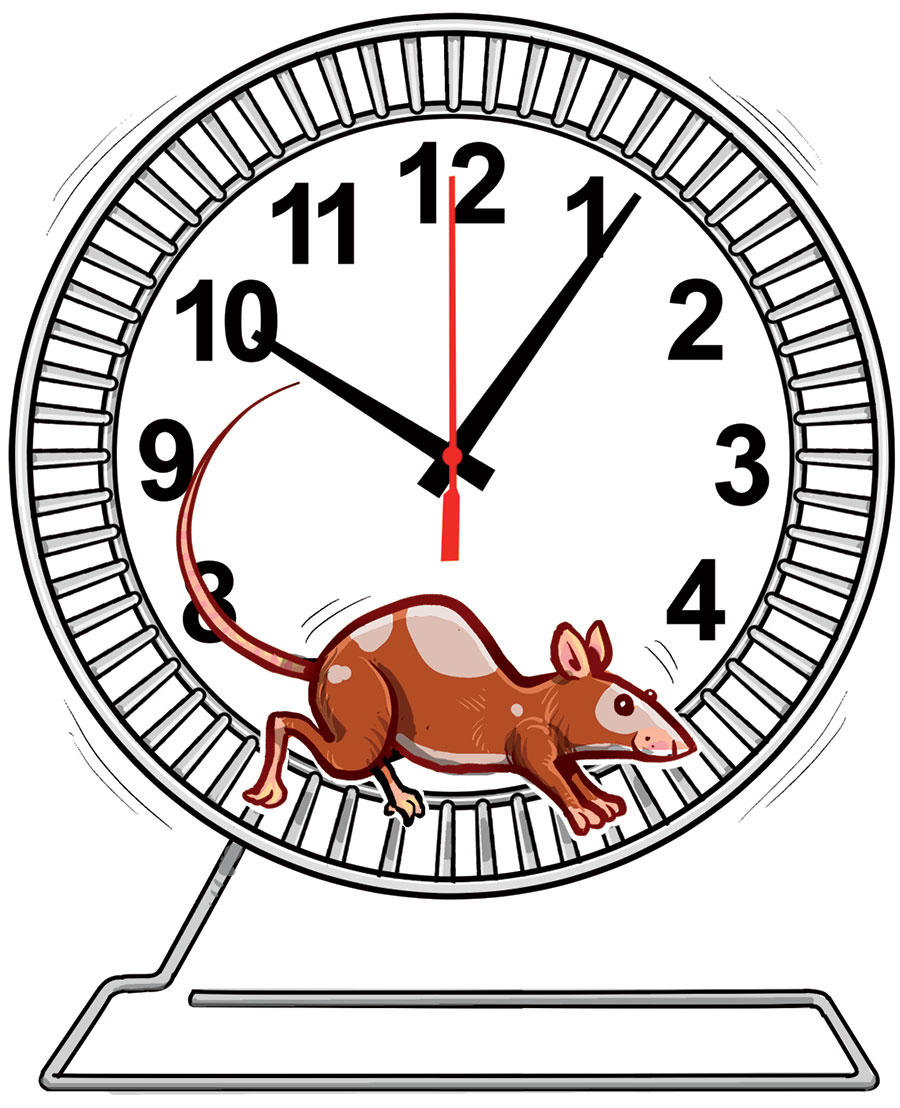
The Study
Mice were placed on a fun-size treadmill surrounded by a VR simulation of a hallway. They had to run until they reached the image of a closed door, which would open after a six-second pause. After several repetitions, researchers took away the image of the door, giving the mice an unobstructed view down the hallway.
The Results
Unfazed by the change, the mice still paused for exactly six seconds before continuing to run. The study pinpointed a previously unknown set of neurons in the medial entorhinal cortex that were active while the mice were waiting. Researchers believe those neurons are responsible for animals’ ability to track time.
What It Means for Us
Besides offering the most compelling evidence to date that your pooch has an internal alarm clock, the findings deepen scientists’ understanding of the entorhinal cortex, one of the first areas in the brain to deteriorate in people with Alzheimer’s. The discovery may make it easier to prediagnose the notoriously hard-to-predict disease.



